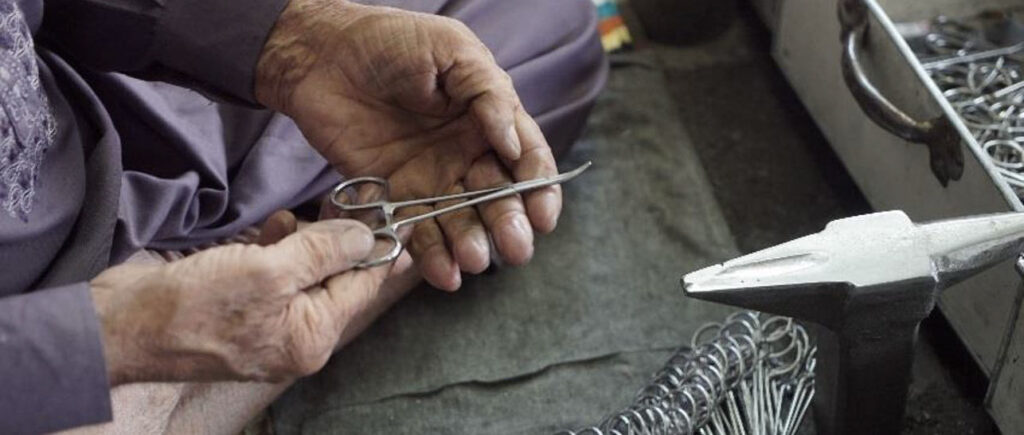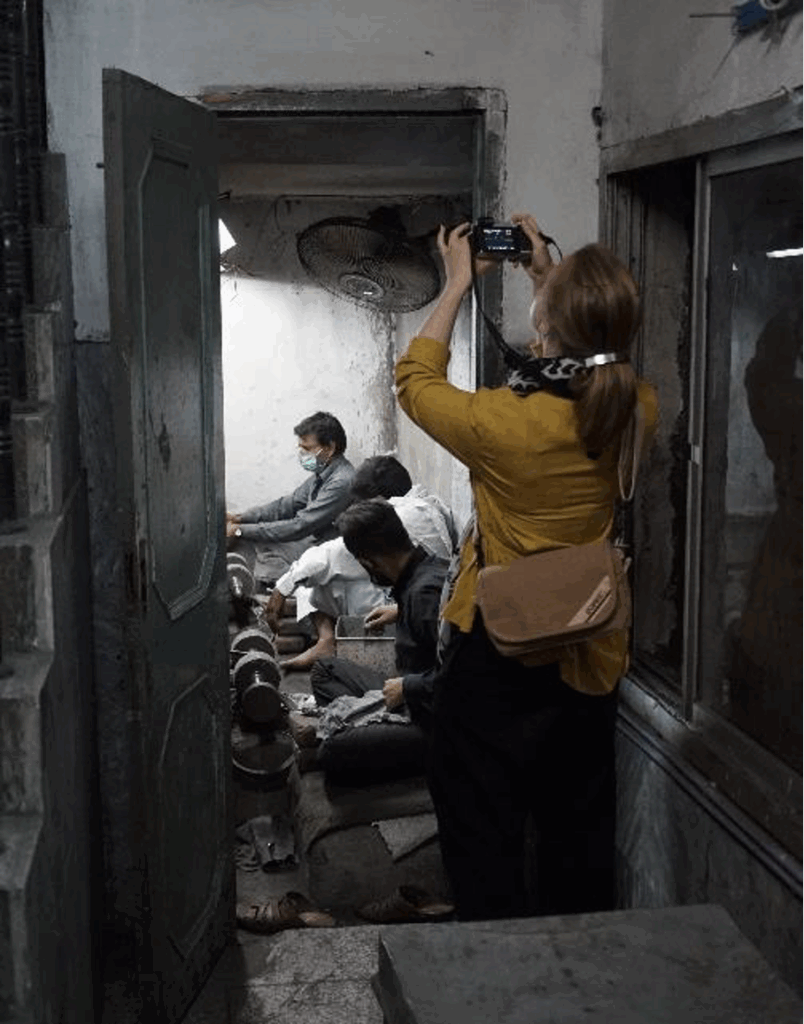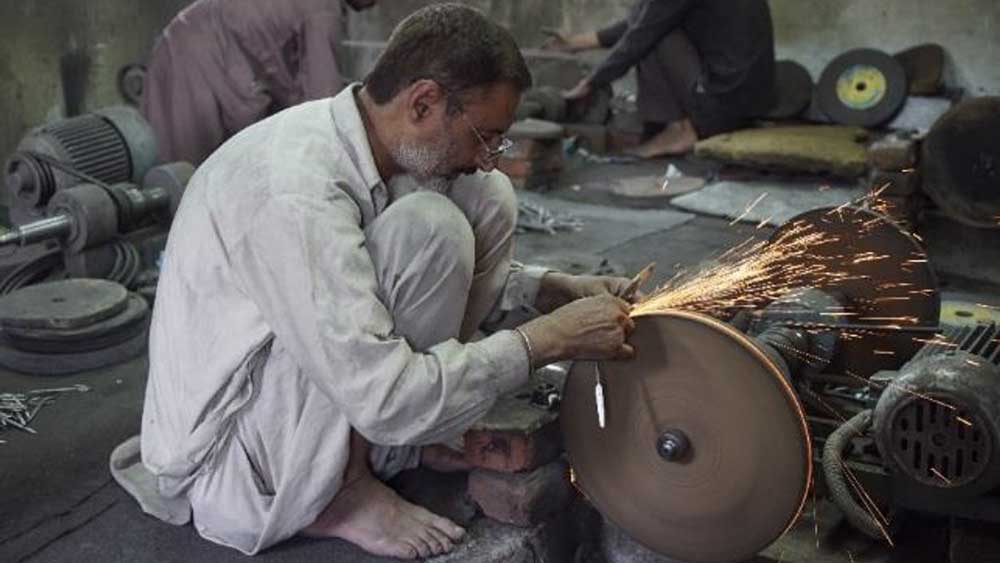Fifteen years of national collaboration

Fifteen years of collaboration – Sweden at the forefront of sustainable procurement
In 2007, it was revealed that materials for Swedish healthcare were being produced in factories that violated labor rights and human rights. The three largest regions responded by jointly developing clearer guidelines for supplier requirements. Other regions joined, and in 2010 a formal collaboration was established between all of Sweden’s regions and county councils.
Fifteen years later, what began as a response to concrete misconduct has developed into an organisation that integrates sustainability into all procurement for Swedish healthcare.
It was the watchdog organisation SwedWatch that, in a report, revealed child labour, hazardous working conditions, and inadequate wages in the production of surgical instruments in Pakistan and healthcare textiles in India. The report’s conclusions clearly pointed to the need for stricter requirements in public procurement.
At that time, concerns about human rights violations in healthcare procurement had grown, but there were few legal requirements in Sweden addressing human rights in public procurement. The new findings (from Pakistan) prompted the procurement directors of the three largest regions — Skåne, Västra Götaland, and the then Stockholm County Council — to react. They initiated a pilot project focused on integrating requirements on labor rights, human rights, and environmental standards into procurement. Inspiration was drawn from CSR work in the private sector, including companies such as Ikea, H&M, and Indiska, as well as initiatives like the UN Global Compact and the OECD Guidelines for Multinational Enterprises.

The code of conduct – an early milestone
The first two years of collaboration led to an early milestone in the regions’ procurement – a code of conduct for suppliers, which referred to the ILO core conventions, the UN Convention on the Rights of the Child, and applicable laws on work environment and labour rights. The code was politically adopted in the three regions, and a decision was made to apply it to the procurement of products in six categories considered high-risk areas: surgical instruments, textiles, gloves, syringes and needles, dressings and wound care, as well as disposable products. (At the end of 2010, the list was expanded to include IT products and pharmaceuticals.)
The code was followed by a common method for evaluating whether suppliers complied with contractual requirements. The method included self-assessment by suppliers and, in some cases, third-party audits conducted on site in manufacturing countries. New factory audits were commissioned by Stockholm County Council and the Västra Götaland region. An audit in Pakistan revealed such serious violations that a contract was not renewed. An audit in Malaysia that identified severe breaches of labour rights and serious work environment issues resulted in an action plan with an extensive programme of corrective measures.
The impact of these new jointly developed instruments – the code of conduct and the follow-up methodology – became the first tangible proof that collaboration between the regions could lead to improvements in manufacturing countries and thereby increase the sustainability of the regions’ procurement. With this conclusion in hand, the foundation was laid to move from a pilot project to a national initiative.
All regions – a more solid organisation
The procurement directors in the pioneer regions reached out to the other regions and county councils, and in 2010 the procurement directors of all regions and county councils joined the collaboration. They faced similar challenges as the three largest regions but lacked the resources to manage them on their own. All regions agreed to co-finance the project, which was named “Social responsibility in public procurement – a collaboration between Sweden’s county councils and regions.” The purpose: to give all regions the same opportunities to conduct sustainable procurement with a focus on human rights, workers’ rights, business ethics, and the environment.
The foundation for national collaboration was now laid. It took a more solid form through the establishment of a steering group, the production of a national website, and the distribution of responsibilities between the regions. A working group with members from all healthcare regions was appointed to implement the steering group’s decisions. An agreement was made to jointly finance a coordinating unit tasked with providing operational support to the regions and developing processes at the national level.
In 2012, Pauline Göthberg, an international expert on sustainable development and social responsibility, was appointed as national coordinator. The regions’ office for sustainable procurement was established as the operational hub of the collaboration and has since gradually grown into today’s team of six employees with expertise in different areas of sustainability. The office develops processes, trains procurement officers and sustainability strategists, and drives and coordinates the collaboration between the regions.
New tools are implemented
In the following years, additional tools were developed to support purchasers in implementing the code of conduct in procurement. A first step was a review of the legal framework, which led to an update of the code of conduct with standard terms for all contracts. The code was now aligned with the UN Global Compact’s ten principles and expanded to include services and a requirement that suppliers must pay their employees fair wages. The contract terms were also updated to reflect the revised code. Suppliers were expected to read the code before submitting tenders, and those awarded contracts committed to complying with the social conditions set out in the agreement.
In 2014, the groundbreaking contract clause on due diligence for sustainable supply chains was launched, with the code of conduct included from then on. The contract clause aims to ensure that contracted suppliers have policies and processes in place to identify, assess, prevent, mitigate, and remedy negative impacts on people, the environment, and society in their own operations and supply chains. The clause, including its terms and definitions, is based on the UN Global Compact, the UN Guiding Principles on Business and Human Rights, and other international agreements.
Suppliers are expected to respect the code of conduct and make every effort to comply with the contract terms within their own organisation and supply chain. Suppliers must therefore have procedures in place to ensure that the goods or services delivered are produced under conditions consistent with the fundamental requirements. The goal: to ensure that suppliers to Sweden’s regions meet ethical, social, and environmental standards, with a particular focus on working conditions and human rights.
More follow-ups – more revelations
The follow-up process, which verifies that suppliers comply with the code of conduct and drives improvements in the supply chain, has also developed. The introduction of standard clauses for human rights made joint follow-ups between the regions possible. This meant that costly audits could be co-financed, more audits could be conducted, and the results could benefit all regions. New sanctioning options were also introduced.
The pace of follow-up work increased. Between 2012 and 2015, 81 self-assessment forms were evaluated and eight factory audits were carried out. More factory audits meant that more violations came to light. Serious violations – forced labour, lack of freedom of association, excessive overtime – were, for example, discovered in Malaysia, where Region Jönköping commissioned an audit at a glove factory. That audit resulted in the supplier establishing a corrective action programme for all of the company’s factories.
After several years of stricter demands on suppliers and stronger follow-up activities, signs of improvement also began to appear at instrument factories in Pakistan. SwedWatch, whose 2007 report on Pakistan and India was the direct catalyst for the development of the regions’ national collaboration, could after revisits report a series of improvements at the factories in Pakistan.
In a new SwedWatch report, Healthier procurement from 2015, it was noted that the new requirements developed by the regions had begun to have an impact. As a result of stricter supplier requirements, the organisation could now report on new legally mandated wages, regulated overtime, improved working environments, and active efforts against child labour. This positive development was further proof that the regions’ new procurement criteria could indeed lead to better working conditions in the countries where healthcare goods are produced.
The ability to follow up on how suppliers meet their commitments has steadily increased in recent years. To create a consistent methodology for identifying risks, developing sustainability requirements, and monitoring suppliers, the national office developed core processes for each of these areas. Today, these processes form the foundation for how the regions integrate sustainability into their procurement.
In 2016, the first core process for follow-up was implemented. At the same time, a decision was made to expand efforts on contract monitoring, which resulted in more suppliers being audited on how they fulfilled the sustainability aspects of their contracts with the regions. Another element of this initiative was the introduction of the national so-called escalation ladder, a method that outlines measures to be taken if deviations from contract terms are identified with suppliers or in their supply chains. Thanks to these efforts, many suppliers began to review their routines for risk assessment and risk management.
The regions at the international forefront
At this time, the national collaboration between the regions had helped position Sweden among the leading countries in Europe in public procurement. With joint guidelines for suppliers and contract clauses on due diligence in supply chains, the Swedish regions established themselves at the forefront of the development of sustainable procurement. Studies by organisations such as SwedWatch and Electronics Watch have shown that requirements on human rights and social rights in workplaces, introduced by the regions in their procurement, can make a difference for workers in manufacturing countries where control systems are typically weaker.
The regions’ collaboration began attracting international attention, and members of the regions’ network were invited as speakers at Swedish universities and at events organised by international bodies such as the OECD, the UN, and the EU. The regions’ progress was also recognised when Region Jönköping County and Stockholm County Council received the “Outstanding Case-Study Award” in the USA in 2017 for sustainable public procurement.
In the years that followed, the regions continued to develop their working methods within the collaboration. Responsibility for particularly high-risk product areas was distributed among the eight regional areas into which the collaboration was organised. With support from the national office, the regions were now required to conduct regular risk analyses for their specific areas, formulate three-year action plans, identify suppliers for audits, and engage in dialogue with industry organisations, among other tasks. Each region was also allocated a fixed budget for follow-ups to ensure equal contributions across all regions. Based on this shared framework, 125 self-assessment forms and five on-site audits were carried out in 2016–2017.
The work to strengthen the strategic framework resulted in new instruments: the fight against corruption received its own national strategy in 2017 under the leadership of the Swedish Association of Local Authorities and Regions (SKR). It was built on the ambition to ensure that public administration is conducted in a legally sound, transparent, and responsible manner. The following year, the national collaboration was expanded to also include environmental coordination. The strategy for harmonised environmental requirements created greater opportunities for both influence and monitoring towards the market and – in the long run – both increased environmental benefits and cost savings for the regions.
Expanded focus on contract follow-up delivered results
Follow-ups in manufacturing countries are most often carried out by independent organisations such as SwedWatch, but initiatives have also been taken by the regions themselves. A highly publicised case, in both Swedish and international media, was triggered by a warning from a well-known British human rights activist in 2019, which exposed debt bondage at factories in Malaysia. These factories produced plastic gloves and other medical consumables that were sold to, among others, Sweden.
Representatives from Region Östergötland, Jönköping, and Kalmar, together with the regions’ office for sustainable procurement, initiated on-site audits in Malaysia. There they found severe cases of debt bondage, where workers were forced to pay various fees, leaving them in a pressured and unequal position vis-à-vis their employers, resulting in unreasonably long working hours.
The outcome of the follow-ups and subsequent dialogue with suppliers and manufacturing companies led to the factories ceasing to charge workers these fees and compensating those who had been exploited. The regions have continued to monitor conditions at the factories in Malaysia, which has contributed to concrete improvements in areas such as safety, housing, wages, and workers’ rights.
New vision – higher level of ambition
In 2020, as the collaboration marked its tenth anniversary, a new vision for the work – Programme Declaration 2030 – was adopted, signalling a clear increase in the regions’ sustainability ambitions. Growing demands and expectations from citizens, a new national procurement strategy, and rising international expectations spurred the regions to intensify their efforts.
The vision states that sustainability aspects must be central throughout the entire procurement process and that the regions’ work should be at the forefront of procurement in terms of national collaboration, nationally harmonised requirements, and follow-ups with real impact. The vision also includes strengthening citizens’ trust in the regions and in the regions’ role in creating a sustainable society.
In the following years, 2021, the work on risk analyses for all types of healthcare products was intensified, and a national harmonisation strategy was developed. At the same time, a broad skills development initiative on sustainable procurement was carried out within the regions. A decision to increase financial resources to the current level – 1 SEK per inhabitant – made it possible to further expand the work on monitoring suppliers’ contract compliance.
In 2024, work was completed on guidance for due diligence in sustainable supply chains, developed in cooperation with the National Agency for Public Procurement. The guidance, available on this website, demonstrates how the contract clause on due diligence for sustainable supply chains can be applied and fulfilled. It is primarily aimed at regions and suppliers but can also be of benefit to other procuring organisations.
That same autumn, a scaling up of monitoring activities was initiated, with a total of 33 supplier audits announced for the near future. The focus is on suppliers of equipment and consumables for healthcare, where the regions’ office for sustainable procurement seeks to ensure compliance with the requirements for sustainable supply chains and systematic environmental work.
In 2025, the work continues with a clear focus on the vision’s concrete goal: the regions’ responsibility to help create a sustainable society. An updated overall risk analysis for healthcare procurement of goods and services is now in place, and new action plans for identifying risks in specific areas are being developed. By the end of the year, a new operational strategy for the coming three-year period will be presented.

The regions’ sustainability work laid the foundation for improvements at factories in Pakistan
The regions’ collaboration year by year
| 2010 | The regions’ joint code of conduct for suppliers is adopted and a steering group is created. Funding is set at SEK 0.25 per inhabitant. |
| 2011 | The regions’ joint code of conduct for suppliers is adopted. |
| 2012 | A national coordinator is appointed, the office is established. |
| 2013 | The suppliers’ code of conduct is revised based on the Global Compact, with requirements on human rights and anti-corruption added. |
| 2014 | The contract clause on due diligence in sustainable supply chains is introduced. |
| 2015 | Funding increases from SEK 0.25 to SEK 0.50 per inhabitant. Cooperation agreements are signed with Adda Inköpscentral and Sykehusinnkjøp in Norway. |
| 2016 | The office is given extended resources for follow-up. National responsibility is allocated for sixteen product categories, distributed across eight regional areas. |
| 2017 | A national anti-corruption strategy is adopted. Region Jönköping and Stockholm County Council are awarded the “outstanding case-study award” in the USA for sustainable public procurement. |
| 2018 | The office is expanded with resources for environmental coordination. |
| 2020 | Tenth anniversary, the Programme declaration 2030 is adopted. |
| 2021 | Broad competence development initiative carried out in the regions. Intensification of risk analyses for healthcare products. |
| 2022 | Decision on increased funding, to SEK 1 per inhabitant. A national strategy for harmonisation of environmental requirements is adopted. Core process for developing sustainability requirements implemented. |
| 2023 | The code of conduct is revised, including guidelines for anti-corruption. Nordic cooperation expands and agreements are signed with all Nordic regions. |
| 2024 | Guidance on due diligence in sustainable supply chains is developed in collaboration with Adda and the National Agency for Public Procurement. |
| 2025 | Core process for identifying and prioritising risk implemented. The regions’ collaboration on sustainable procurement celebrates 15 years and a new strategic plan for 2026–2030 is adopted. |